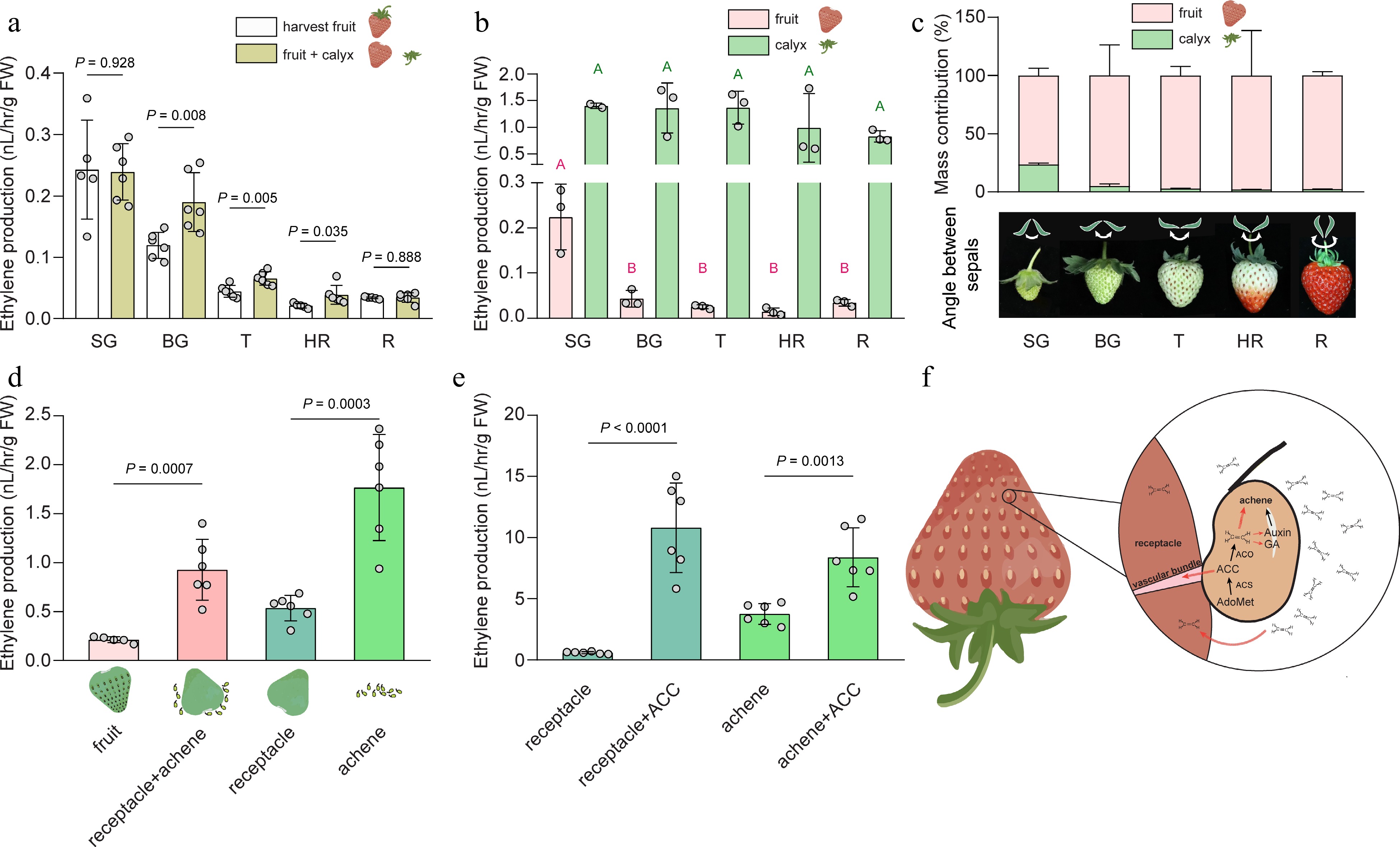-

Figure 1.
Ethylene production of the heterogeneous tissues in strawberry fruit during growth and ripening. (a) Ethylene production of harvest strawberry fruit or fruit with detached calyx at five developmental stages. P values were determined using two-tailed t-tests. n ≥ 5. (b) Ethylene production of fruit and the corresponding calyx at five stages during strawberry growth and ripening. Different uppercase letters indicate significant difference at p < 0.05, determined using one-way ANOVA followed by Tukey's posthoc test. n = 3. (c) Upper panel: percentage of mass contribution of calyx and fruit respectively to harvest fruit. Three biological replicates were analyzed, in each biological replicate, five fruit were used. Lower panel: an illustration showing that the angle between sepals increases as fruit develops. (d) Ethylene production of fruit, achenes and receptacle, receptacle, or achenes derived from fruit at SG stage. P values were determined using two-tailed t-tests. n ≥ 5. (e) Ethylene production of receptacle and achenes from SG fruit treated with or without 100 μM ACC. P values were determined using two-tailed t-tests. n = 6. Average ± standard deviation is shown. SG, small green; BG, big green; T, turning; HR, half red; R, red. (f) A diagram showing hypothesized roles of ethylene in strawberry. Ethylene is largely synthesized in the achene by ACC synthase (ACS) and ACC oxidase (ACO). Ethylene may regulate the development and maturation of achene directly and/or indirectly via actions on auxin and gibberellic acid (GA). The ethylene emitted from the achene may diffuse to the receptacle to regulate the growth and ripening of the receptacle. In addition, ACC, the ethylene biosynthesis precursor, might be transported to the receptacle from achenes via the vascular bundles. Red dashed arrows indicate hypothesized roles of ethylene in strawberry fruit. AdoMet, S-adenoysl-methionine. ACC, 1-aminocyclopropane-1-carboxylic acid. Cultivated octoploid strawberry (Fragaria × ananassa 'Yuexin') were used in all experiments. For ethylene measurement, fruit tissues were incubated in 5, or 100 or 300 mL sealed vials for 4 h before headspace withdrawal. The ethylene concentration was measured by gas chromatography (6890N GC system, Agilent, CA, USA) equipped with a flame ionization detector.
Figures
(1)
Tables
(0)